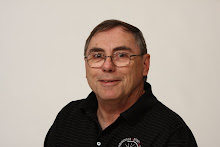In February 2000 the delegates representing Federal/ Provincial Governments, educators, First Nation communities participated in a National Recreation Roundtable on Aboriginal/ Indigenous Peoples. This Roundtable was held in Hobbema, Alberta, (Maskwachees). The representatives stated they were deeply committed to improving the health, wellness, cultural survival and quality of life of Aboriginal/Indigenous Peoples, through physical activity, physical education, sport and recreation.
At the conclusion of the Roundtable the following declaration was made "We Declare that:Sustainable commitment and investment in active living, physical activity, physical education, recreation and sport are essential to promote health and address social issues facing Aboriginal/Indigenous Peoples in communities across Canada.
And therefore, we call on all governments, non-governmental organizations, communities and individuals to endorse this Declaration."
The Roundtable also identified the following as strengths:
We are supported by these strengths:
• A willingness to respect partners and to work together with a readiness to learn and lend;
• A commitment by the Federal/Provincial/Territorial governments to reduce inactivity among Canadians by 10% by 2003;
• A growing number of effective programs, policies and practices;
• Infrastructure development in the sport and recreation sector;
• A physically active Aboriginal/Indigenous traditional lifestyle; and
• International documents/statements that recognize the importance of physical activity, physical education, sport and recreation.
The challenges that were identified include:
• The fact that Aboriginal youth are the fastest growing segment of the Canadian population;
• The need to support, invite, integrate and use the knowledge of Elders in program design and delivery;
• The lack of priority in allocation of adequate financial and human resources for recreation and sport;
• The complexity of the infrastructure independent rather than interdependent;
• The need to enhance communication and accountability between Aboriginal and non-Aboriginal sport and recreation organizations and governments;
• The need for quality community based programs and services and the creation and renewal of sport and recreation facilities;
• A learned attitude of helplessness and "who cares?" held by many;
• The lack of clear initiatives for capacity building at the community level;
• The need for more leaders and positive role models;
• The need to recognize success and celebrate participation;
• The need to ensure quality physical education in schools;
• The need to ensure recreation and sport are positive experiences; and
• The need to create, pursue and implement system-wide change that will result in more flexible, creative, and responsive policies and practices.
So what has changed since the Declaration in 2000? Very little in the communities, other than an increase in obesity, diabetes, youth suicides etc.
The Indigenous Sport Council (Alberta) through financial support from the Rural Alberta Development Fund and Alberta-Canada Aboriginal Bilateral has slowly made in roads in some communities through the delivery of programs such as Run, Jump, Throw and the Aboriginal Recreation and Sport Resource Manual. But it is a slow process.
Building partnerships is often a challenge. Organizations such as Alberta Recreation and Parks Association and Alberta Association of Recreation Facility Personnel have stepped forward to work with the ISCA to address common concerns.
It appears that with many other agreements, declarations, MOU'S etc the words on the declaration were just that words with minimal commitment.
Tuesday, April 13, 2010
Subscribe to:
Posts (Atom)
